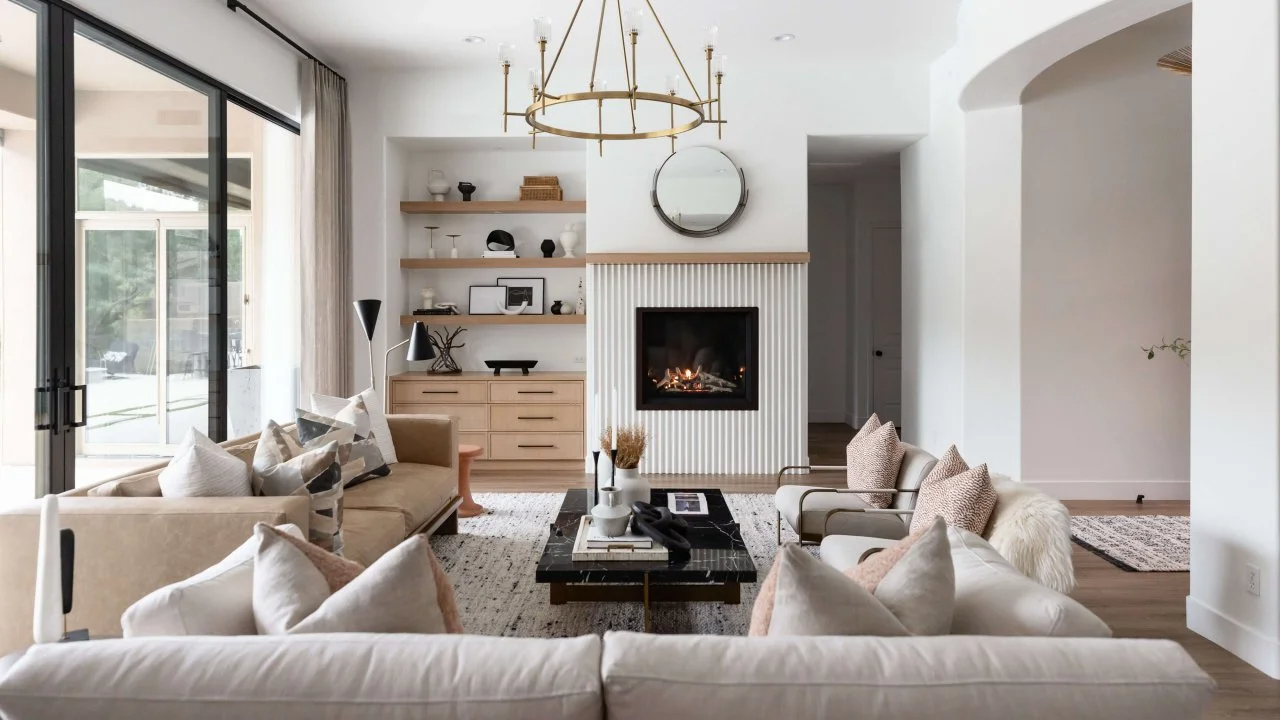sqrwomensrestroom: Redefining Comfort Privacy and Inclusivity in Public Restrooms
Public restrooms often escape our daily notice—until we truly need them. But for women, these spaces represent more than utility: they’re reflections of safety, dignity, and accessibility. Enter sqrwomensrestroom, a concept designed to revolutionize the restroom experience for women in public spaces. By combining advanced design, cutting-edge technology, and human‑centered planning, sqrwomensrestroom isn’t just an upgrade—it’s a transformation.
Why Bathroom Design Matters
The Psychological Experience
Bathrooms are intimate spaces where vulnerability plays a key role—yet many public restrooms ignore that reality. Poor lighting, cramped stalls, shared spaces—these can induce stress, unease, or even fear. By contrast, thoughtfully designed restrooms can reduce anxiety, enhance wellbeing, and build trust.
Gendered Expectations
Women and people assigned female at birth confront distinct challenges—period care, safety, and privacy foremost among them. The lack of safe, private, and hygienic spaces amplifies these challenges. The design ethos of sqrwomensrestroom acknowledges and actively addresses them.
A Shift in Social Norms
Cities and businesses are starting to realize that investing in public restrooms sends a message: we care about your dignity. Around the world, inclusive facilities are being recognized as markers of equity and progress.
What Is sqrwomensrestroom?
Concept Overview
At its heart, sqrwomensrestroom is a comprehensive design concept centered on Privacy, Safety, Accessibility, Hygiene, and Aesthetics. Every detail—from high stalls to antimicrobial surfaces—contributes to a better experience.
Core Design Goals
- Complete Privacy: Floor-to-ceiling, sound-dampened stalls ensure personal space.
- Touchless Experience: Motion‑activated dispensers and auto‑flush eliminate germs.
- Visual Comfort: Warm lighting and soft color palettes soothe stress.
- User Flow: Clear wayfinding and maneuverable layouts ease peak‑time navigation.
- Universal Access: Accommodating strollers, wheelchairs, and assistive devices.
Empowerment Through Design
sqrwomensrestroom symbolizes a shift: public design should enhance, not hinder, women’s sense of empowerment.
Architectural Innovations
Pod‑Style Enclosed Stalls
Each stall is a self-contained unit—full height, acoustically treated, and engineered for privacy. Users can lock and unlock without gaps or sound leakage, and stalls are deep enough for bag storage or assistance.
Ergonomic Intentionality
Surfaces and fixture heights tailored to average female ergonomics—sink basins, counters, hand-dryers and shelves are set at accessible and comfortable levels. Door handles and paper dispensers are within easy reach.
Holistic Spatial Flow
Circulation zones are generous to prevent crowding. Separating entry and exit paths streamlines foot traffic, reducing bottlenecks near sinks or mirrors.
Intelligent Materials
Durable, scratch- and moisture-resistant materials with antimicrobial properties (e.g., copper‑alloy fixtures, GRP panels) enhance cleanliness and longevity.
Smart, Hygiene-Focused Features
Touchless Everything
- Sensors for faucets, soap dispensers, flush valves, paper towels.
- Auto-dispensing feminine hygiene products, minimizing touchpoints.
Air Quality & Ventilation
Positive‑pressure ventilation prevents odors from entering and ensures ideal airflow. Air purifiers with HEPA filters aren’t uncommon in high-end installations.
Self‑Cleaning Tech
Some stall doors feature auto‑sanitizing UV cycles overnight. Floor cleaning robots or antimicrobial surfaces offer real‑time cleanliness.
Smart Occupancy & Safety
LED indicators show stall availability. Optional panic buttons or intercoms connect to security or staff in case of emergencies.
Accessibility & Inclusivity
Compliant and Beyond
Wide entries, grab bars, lowered fixtures, knee space under sinks—even reflective reach tests ensure equipment is within range for all users.
Support for Caregivers
With integrated adult-sized changing tables and fold-out benches, caregivers—mothers or family members—can assist with dignity.
Neuro-Inclusive Environment
Modulated lighting, soft tones, visual signage, and reduced noise accommodate neurodiverse individuals, creating calm, friendly spaces.
Multicultural & Multilingual
International symbols, simple graphics, and clear instructions foster understanding across culture and ability lines.
Aesthetic & Psychological Impact
Uplifting Color & Lighting
Designers use biophilic-inspired palettes—sage greens, soft neutrals—with LED temperature tuning to mimic natural daylight cycles and avoid sharp contrasts.
Sound & Sensory Design
Acoustical panels reduce noise, masking privacy sounds. Gentle background sounds or aromatherapy can reduce clinical feel.
Comforting Ambiance
Mirrors are generous, makeup stations are private, and there’s space for rest—these are all deliberate human-centered design decisions.
Sustainability and Efficiency
Eco-Friendly Fixtures
Water-efficient toilets and urinals, smart faucets, and vacuum-flush systems reduce water use by up to 50% compared to conventional setups.
Recycled and Renewable Materials
Wall panels and tiles are sourced from recycled composites. Countertops use recycled glass/stone. LED lighting consumes 60–80% less energy.
Long-Term Maintenance
Modular elements are replaceable. Built-in sensors monitor use patterns and help with proactive servicing.
User Feedback: The Human Touch
Survey Insights
Independent surveys show:
- 85% of users report greater comfort vs. conventional restrooms.
- 90% appreciate touch-free hygiene systems.
- 75% of mobility-aid users say it’s more accessible.
Real Testimonials
- “A sense of dignity returned.”
- “The stall was like a personal pod—no worry about sound or sight.”
- “I didn’t feel rushed or crowded while getting my kid ready.”
Behavioral Outcomes
Users linger less at sinks—sanitary—and feel less stressed overall, supporting the goals of hygiene and dignity.
Benchmarking Against Other Designs
| Feature | sqrwomensrestroom | Standard Restrooms | Premium Alternatives |
|---|---|---|---|
| Enclosed Full-Height Stalls | ✅ Yes | ❌ No | ⚠️ Partial |
| Touchless Fixtures | ✅ Yes | ❌ No | ⚠️ Optional |
| All-day Lighting Adjustment | ✅ Yes | ⚠️ No | ⚠️ Rare |
| Changing Facilities | ✅ Yes | ❌ No | ⚠️ Rare |
| Acoustical & Scent Control | ✅ Yes | ❌ No | ⚠️ Some |
| Sustainable Materials | ✅ Yes | ⚠️ No | ⚠️ Inconsistent |
| Universal Accessibility | ✅ Yes | ❌ No | ⚠️ Partial |
| Smart Maintenance Systems | ✅ Yes | ❌ No | ⚠️ Partial |
Observation: While premium restrooms address some issues, their implementation is often piecemeal. sqrwomensrestroom integrates all these elements as standard.
Case Studies: Where It’s Deployed
Mall in Madrid
Reduced line wait times by 30%, improved shopper sentiment, reported as modern and humane.
University Campus in Toronto
Student surveys showed increased use, reduced theft of sanitary items—empowerment through access.
Corporate HQ in Tokyo
Improved morale among female employees—private nursing pods praised by working mothers.
Economic & Social Argument
Return on Investment
Though costlier upfront, sqrwomensrestroom supports:
- Higher ratings (better returns in malls & hospitality)
- Reduced vandalism and maintenance
- Attracting female foot traffic—major in shopping/office contexts
Brand & PR Boost
Facilities that invest visibly in inclusivity stand out in media—for leadership in equity and innovation.
Social Equity Lens
Access to safe, private spaces is a basic human need—often overlooked in infrastructure. sqrwomensrestroom treats it as foundational, not optional.
Implementation: A Practical Roadmap
- Needs Assessment – analyze user data (female ratio, student/parent traffic, accessibility).
- Stakeholder Engagement – consult disability advocates, women’s groups, facility managers.
- Pilot Installation – one or two units in high-traffic areas; monitor usage, satisfaction, feedback.
- Technology Integration – sensors, occupancy signage, smart maintenance records.
- Staff Training – cleaning protocols, emergency procedures, stocking.
- Refinement Phase – act on pilot feedback to refine design, layout, signage.
- Scale-Up – deploy networked units across facility or chain.
- Ongoing Review – conduct periodic surveys, monitor usage metrics, measure ROI.
Addressing Common Concerns
Cost Anxiety
Offset with reduced maintenance, increased traffic, and opportunity for sponsorship/partnerships (e.g., sanitary product brands).
Vandalism Risk
Full-depth design mitigates graffiti. Use of antimicrobial and scratch-resistant surfaces builds resilience.
Tech Malfunctions
Redundancy built in: manual flush handles, backup lighting, override locks.
Cultural Acceptance
Education and signage ease transitions. Surveys show men, too, appreciate modern fixtures.
The Future of fsqrwomensrestroom
As restrooms join the smart-building ecosystem, we can expect:
- IoT Integration: live availability tracking, usage heat maps, automated resupply.
- Advanced Access: RFID sensors for employees; inclusive restrooms with multiple gender doors.
- Expanded Amenities: built-in sanitary vending, prefold disposal at disposal tables.
- Broader Adoption: from transit hubs to stadiums, sqrwomensrestroom becomes baseline.
Call to Action
For Architects & Designers: Use this blueprint to pioneer inclusive restroom design.
For Local Governments: Stand up policies that prioritize restroom equity in public infrastructure.
For Businesses & Institutions: Audit your facilities and commit to inclusive bathroom upgrades.
Together, sqrwomensrestroom can reshape not just restroom architecture—but public dignity and inclusion.
Conclusion
sqrwomensrestroom transcends a design upgrade—it’s a declaration: women’s privacy, dignity, and access matter. By combining ergonomic design, hygiene innovation, and inclusive layout, it sets a new benchmark for public infrastructure.
Not just an amenity, but a statement. As facilities around the world embrace this standard, we step into a future where design respects identity and accessibility validates every user. Public restrooms don’t have to be a blind spot—sqrwomensrestroom shows us that they can lead the way.




Post Comment